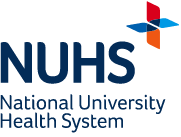Biosketch
Dr. Adrian Yap is a Senior Consultant, Department of Dentistry, Ng Teng Fong General Hospital. He is an Adjunct/Honorary/Guest Professor at the Faculty of Dentistry (FOD), University of Malaya, Trisakti University. University of Hong Kong as well as the Peking University School of Stomatology. In addition, he is a Clinical Assoc. Professor at the National University of Singapore (NUS) and Duke-NUS Medical School.
Dr. Yap obtained his BDS degree from NUS in 1991 where he received several awards including the FAC Ohlers Gold Medal for best clinical student and Terrell Silver Medal for distinction in Prosthodontics. He went on to pursue his post-graduate training and graduated from the University of London, where he was conferred the prestigious 3M Dental Postgraduate Prize, with a Masters in Conservative Dentistry in 1993.
Dr. Yap obtained his Doctor of Philosophy degree from NUS in 2001 and his Graduate Diploma in Psychotherapy from the Faculty of Medicine, NUS in 2004. On top of his academic accolades, he has also received numerous clinical/service excellence, teaching and research awards including the NUHS-Mochtar Riady Pinnacle Master Clinician Award.
Dr. Yap is known for his expertise in Temporomandibular Disorders, Dental Sleep Medicine and Biomaterials. He lectures worldwide and has authored more than 260 refereed journal articles (Scopus H-index of 47), 730 conference/seminar papers, several book chapters and patents in these areas. Dr. Yap serves in the editorial boards of many international journals including Journal of Oral Rehabilitation, Journal of Craniomandibular and Sleep Practice (CRANIO), Operative Dentistry, Journal of Adhesive Dentistry as well as Current Nanoscience.
Journals & Publications
1. Yap AU, Zhang XH, Cao Y, Fu KY. Degenerative temporomandibular joint diseases and their relation with sleep and emotional disturbance [published online ahead of print, 2022 Mar 14]. Cranio. 2022;1-8. doi:10.1080/08869634.2022.2050976
2. Yap AU, Zhang MJ, Zhang XH, Cao Y, Fu KY. Viability of the quintessential 5 temporomandibular disorder symptoms as a TMD screener [published online ahead of print, 2021 Nov 28]. Oral Surg Oral Med Oral Pathol Oral Radiol. 2021;S2212-4403(21)00734-3. doi:10.1016/j.oooo.2021.11.009
3. Yap AU, Zhang XH, Cao Y, Fu KY. Functional, physical and psychosocial impact of degenerative temporomandibular joint disease. J Oral Rehabil. 2022;49(3):301-308. doi:10.1111/joor.13288
4. Cao Y, Yap AU, Lei J, Zhang MJ, Fu KY. Oral health-related quality of life of patients with acute and chronic temporomandibular disorder diagnostic subtypes. J Am Dent Assoc. 2022;153(1):50-58. doi:10.1016/j.adaj.2021.07.011
5. Yap AU, Marpaung C, Gunardi I. Psychometric properties of the Indonesian Fonseca anamnestic index and the presence/severity of temporomandibular disorders among Indonesian young adults [published online ahead of print, 2021 Oct 31]. Cranio. 2021;1-8. doi:10.1080/08869634.2021.1999615
6. Yap AU, Sultana R, Natu VP. Somatic and temporomandibular disorder symptoms - Idioms of psychological distress in Southeast Asian youths [published online ahead of print, 2021 Sep 26]. Cranio. 2021;1-8. doi:10.1080/08869634.2021.1982496
7. Yap AU, Cao Y, Wong MCM, Fu KY. Rasch validation of the oral health impact profile for temporomandibular disorders [published online ahead of print, 2021 Aug 26]. Oral Dis. 2021;10.1111/odi.14011. doi:10.1111/odi.14011
8. Yap AU, Zhang MJ, Cao Y, Lei J, Fu KY. Comparison of psychological states and oral health-related quality of life of patients with differing severity of temporomandibular disorders. J Oral Rehabil. 2022;49(2):177-185. doi:10.1111/joor.13216
9. Lei J, Yap AU, Zhang M, Fu KY. Temporomandibular disorder subtypes, emotional distress, impaired sleep, and oral health-related quality of life in Asian patients. Community Dent Oral Epidemiol. 2021;49(6):543-549. doi:10.1111/cdoe.12643
10. Yap AU, Marpaung C, Rahmadini ED. Psychological well-being and distress: Their associations with temporomandibular disorder symptoms and interrelationships. Oral Surg Oral Med Oral Pathol Oral Radiol. 2021;132(2):163-171. doi:10.1016/j.oooo.2021.02.012


















